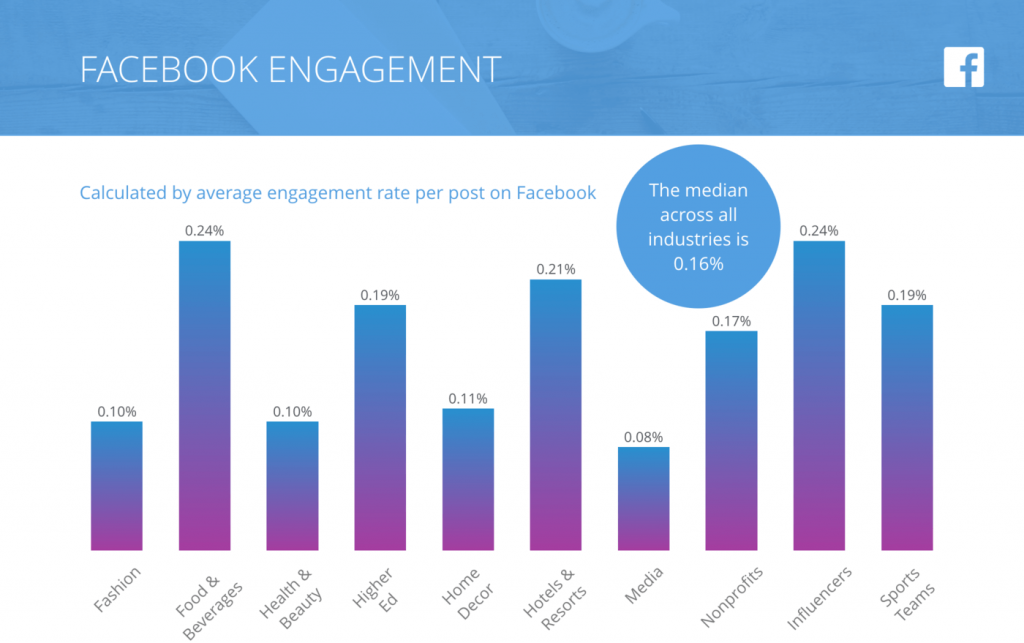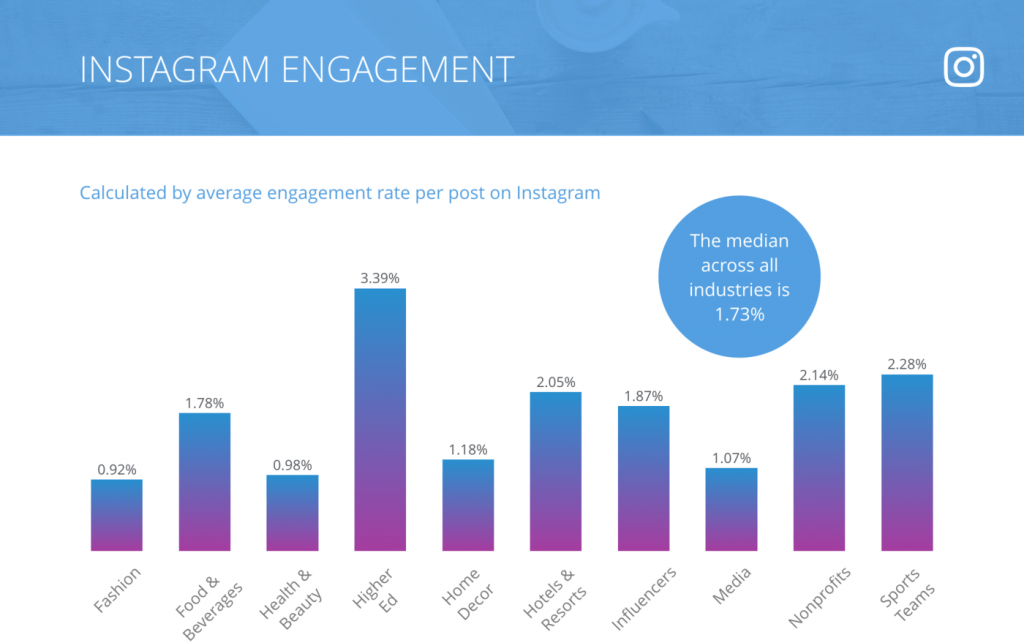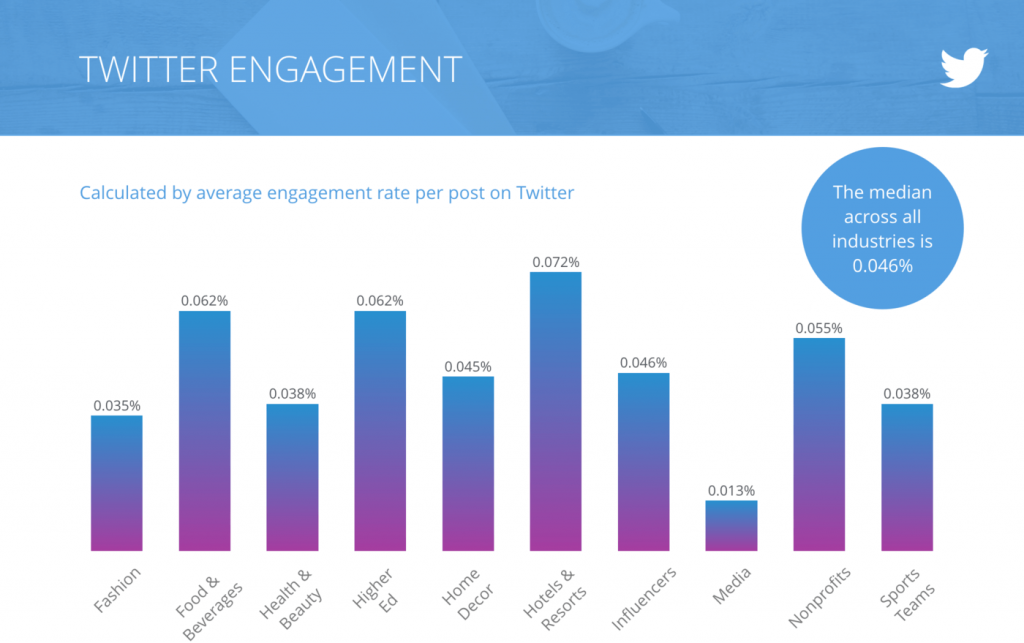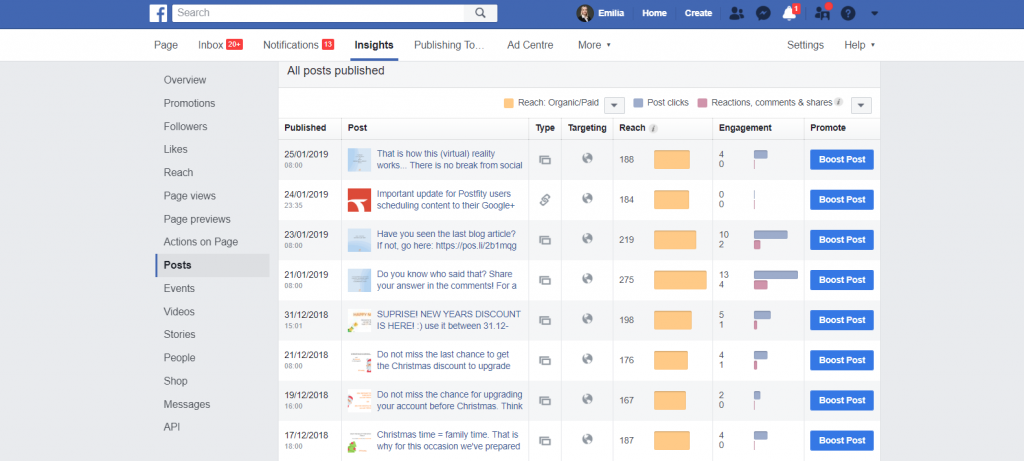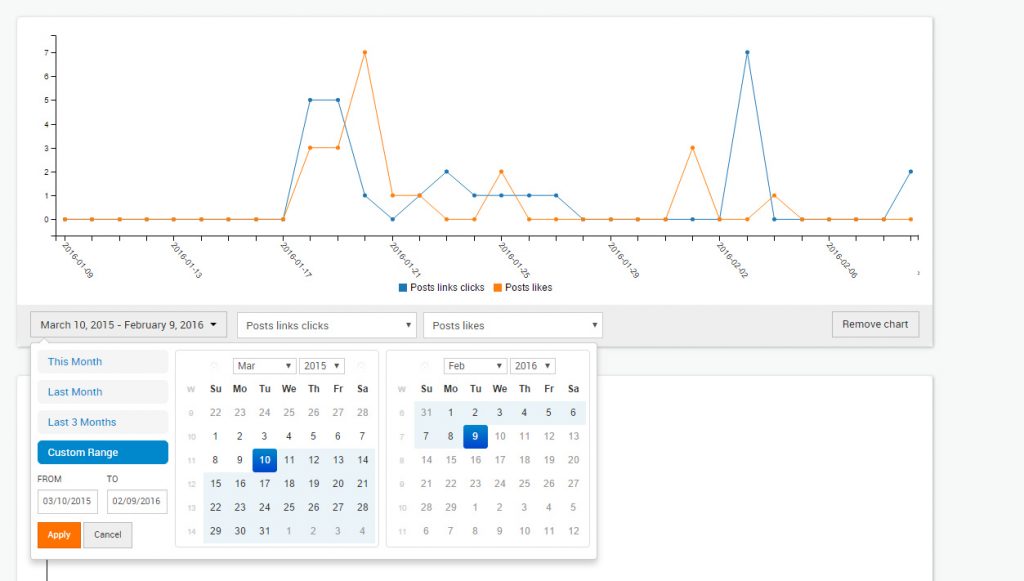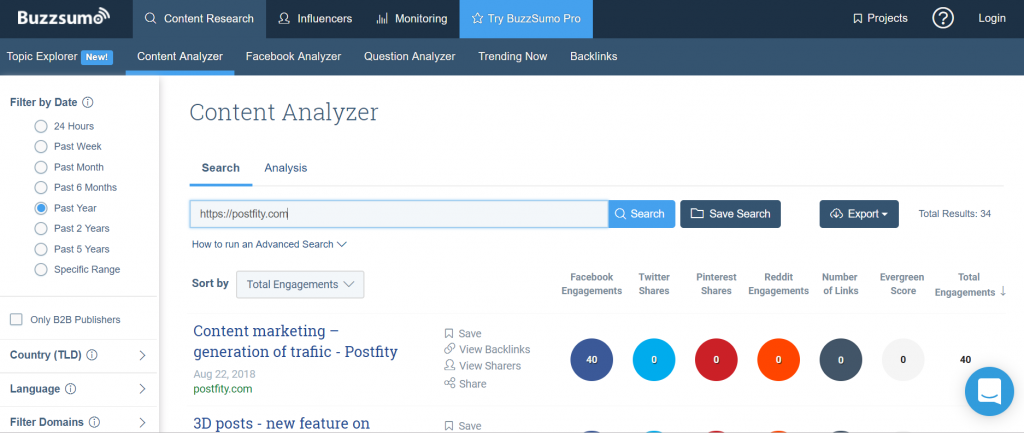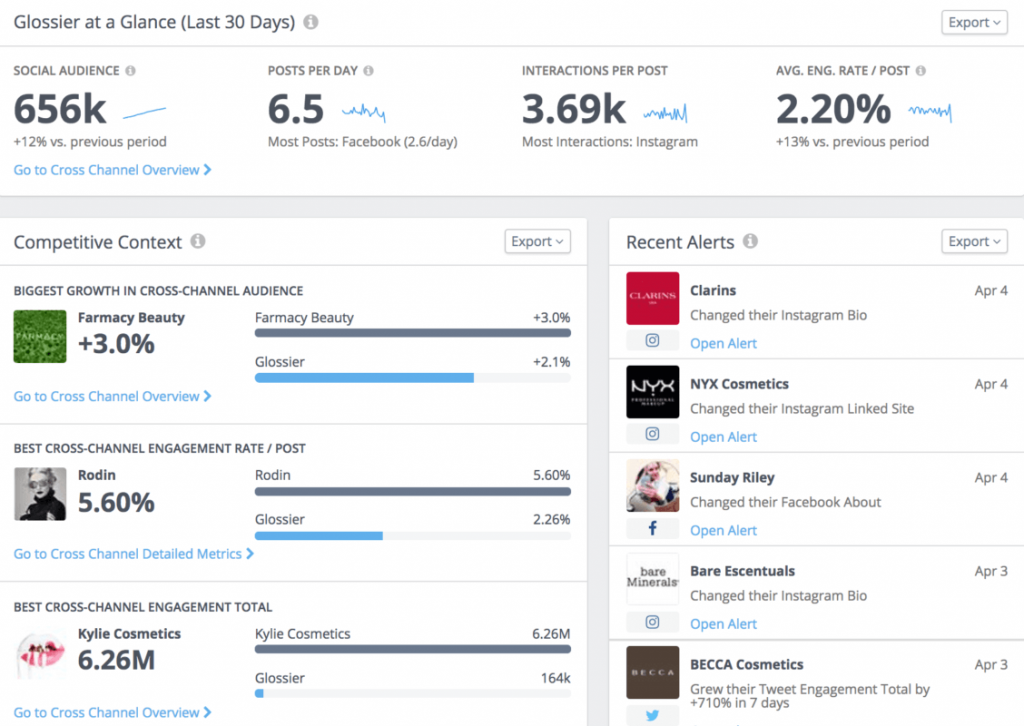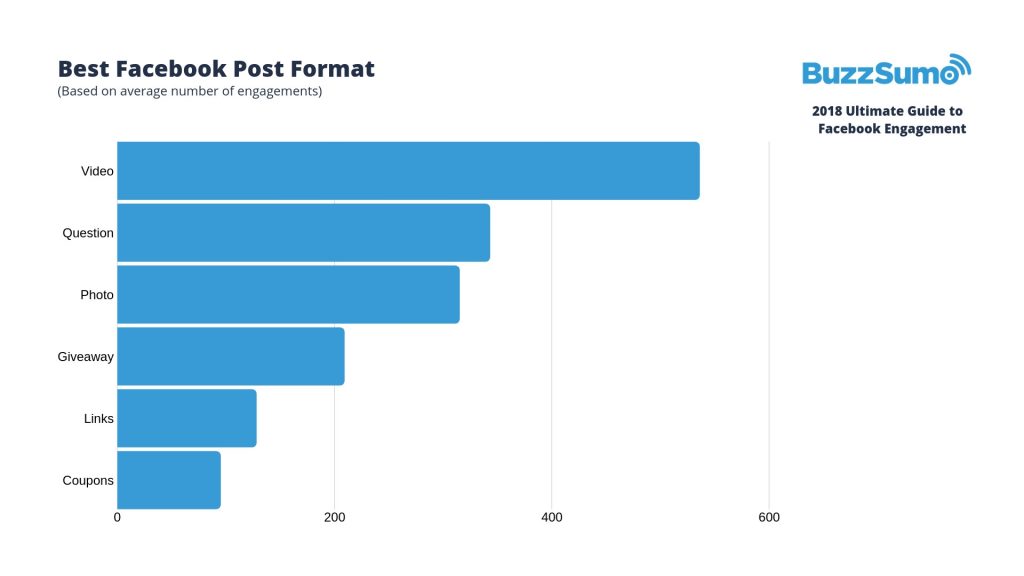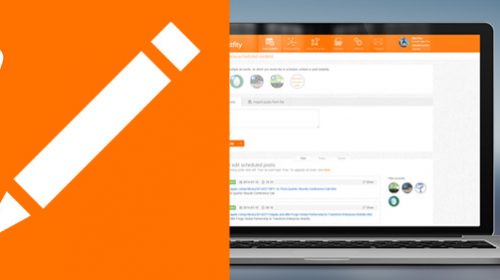Yeah, we hate wasting time too. That’s why we’ve created a digital content strategy for social media that will help you get more out the time you spend on social media marketing.
With over 90 million business pages on Facebook competing for users’ attention, and rapidly declining organic reach, businesses need to be more and more strategic about what and how they post. Our post will help you create a proper digital content strategy for your business, and outsmart the new algorithms to get reach more people in your audience.
How to create a digital content strategy (social marketing plan) for social media?
Organic reach is plummeting. What now?
About a year ago Mark Zuckerberg announced that Facebook was going reduce the number of posts coming from businesses that the users see on their walls. This was supposed to help people see more content from friends and family in order to “encourage meaningful interactions between people“.
The result was quite dramatic for both Facebook page and Facebook group owners, as well as for Instagram accounts: the organic (unpaid) reach ( = how many of your audience see the content you post) has declined by a whopping 34% compared to previous year, according to a study by Wolfgang Digital.
Good news? With a proper digital content strategy for your social media you can outdo your competitors who still ‘post and pray’. Before you post anything on your social media, you should answer the questions:
Where? What? Why? How often? When? …you should be posting.
Here are the 5 steps you need to follow to create an effective digital content strategy for social marketing:
1. Where? Decide which social media will be best for your business
Not all social media are equal for all businesses.
Before you decide to invest your time in posting on social media, answer a few questions about your business:
- Are you a B2C or a B2B business? B2B businesses, SaaS apps, and employment agencies do best when focusing on LinkedIn and (to a lesser extent) Twitter, leaving more visual platforms like Instagram for consumer products.
- Who is your target audience? People use different social media depending on age, gender and interests:
- Facebook is used by both men and women, and it’s most popular with 25-55 year olds, with the most dominant age 25-34. So, if you’re targeting teenagers, Facebook may be already too old-school for them! According to marketing firm Blue Corona, it’s best for Fashion, Auto, E-commerce, Retail, Entertainment, Real Estate, Marketing, Sports, Health and Wellness, News and Information industries. You can check a full report on social media audience stats here.
- Instagram is used mostly by 18-35 year old women. It’s definitely the place for B2C, especially if you’re in Food, Fitness, Fashion, Travel & Hospitality, Wellness, Beauty etc.
- Twitter is used mostly by 18-29 year olds, following topics on: News and Information, Retail, E-commerce, Health and Wellness, Travel and Hospitality, Telecom, Finance, Fashion, Retail, and Sports.
- What industry are you operating in?
You can check more in-depth engagement statistics for your industry to decide which social medium you should spend most time on – and include in your digital content strategy.
Facebook:
As you can see, posts about food, travel as well as posts by influencers garner the highest engagement rates on Facebook.
Instagram:
Instagram’s engagement – quite surprisingly – peaks for higher education, followed by sports, travel and food.
Twitter:
Source: RivalIQ
2. What? Check what your audience really likes to read
Knowing your audience well (aka having a clearly defined ideal customer avatar) is the bedrock of any successful digital content strategy.
There are several ways how you can check what posts resonate most with your target audience:
1. Look into your Facebook/ Instagram/ Twitter insights
Using analytics available in the admin panel of Facebook, Instagram and Twitter will help you notice what type of content resonates most with your audience. Is it informative, evergreen blog content? Funny, viral videos? Infographics?
If you’re only starting out and don’t have an audience yet – jump to the next point.
If you want to delve deeper into your Instagram analytics, Squarelovin provides a useful tool calculating engagement on your posts.
2. Use Postfity analytics
With Postfity analytics, you can browse your audience activity (likes, shares) across different channels at the same time:
3. Do competitor analysis using Buzzsumo
If you’re at the beginning of your journey and your audience is still quite small/ you don’t have enough data, you may want to look into what kind of content your direct competitors are creating. Of course – you need to make sure that they are really targeting your target audience.
Use a tool like Buzzsumo to check what content on your competitors’ website was most popular with their audience. Simply paste the link of your competitor’s website and see what pages (and topics) got most Facebook likes, Twitter shares and backlinks:
This tactic is great even when you have a sizeable audience and track record allowing you to inspect your own analytics – analysing your competitor’s most popular content can give you inspiration for your own content topics – and how to improve on what your competitors have already created. This is the so-called ‘skyscraper technique’. By analysing your competitors’ most popular blog posts you can create better ones. Creating top-quality content on a given topic in your industry will help you boost your Google ranking.
RivalIQ is another tool that allows you to check engagement on different types of your posts and compare it to similar posts posted by your competition:
4. Ask your target audience
Last but not least, make sure you ask your target audience what they would most like to read on a given topic and include their preferences in your digital content strategy.
On the basis of the previous steps, brainstorm a few content topics on a particular subject.
Then: ask your own audience, find relevant forums, Facebook groups and LinkedIn groups that include your target audience, use the right hashtags on Twitter to conduct a short survey:
- What topics around a particular subject they are most interested in;
- What types of content (posts, videos, infographics) they would like to consume on that topic
- How often would they like to hear from you
5. Experiment
There’s no better way what your target audience really likes than A/B testing different types of content.
How to A/B test the same piece of content?
- Try posting the type of content at different times and see when your audience engages more.
- Repurpose blog content into: a) infographics b) longer ‘microblog’ type posts and see what brings more engagement.
- Repurpose content into live videos and normal videos, see what brings more engagement.
- Try different language and wording – maybe your audience wants you to be more personal?
- Try posting photos of people with your posts.
6. Check what types of content perform best on different social media
You may have heard that videos attract more attention than text. Or that posting links reduces engagement on social media. But is that true for all social media platforms?
Again, don’t rely on guesswork. Check the engagement stats for each social medium while creating your digital content strategy:
3. Why? Create content that is aligned with your business goals
Knowing your ‘why’ is critical to your digital content strategy’s success. Tyler Hykes, founder of Optimist, grew a 7-figure business off the back of a well-structured content strategy corresponding to different business goals:
- Evergreen content – thoroughly researched content that provides a lot of information and high value to the reader. It does not go out of date, hence it’s a great SEO tool for driving traffic to your website. If you do proper keyword research and competitive analysis, evergreen content will help your website rank better. While your blog should be the backbone of your evergreen content, you can repurpose evergreen posts into Facebook posts with infographics, providing a link to the original piece (you can experiment with direct linking vs. embedding the link in the infographic).
- Social/ viral content – e.g. interesting or funny videos, memes, gifs. Anything related to your topic that builds a relationship with your audience goes. Include clear calls to actions to boost engagement.
- Link-building content – content aimed at providing backlinks to your site.
How to create content that other people will want to link to on their websites?
The best way is to repurpose your most valuable content into catchy infographics (like the one from Hykes I linked to above – see, it works!) and publish them on your social media. (The most linkeable infographics include some kind of novel statistics or original research findings).Then, reach out to influencers in your field and ask them if they would be interested in including your graphic on their website/ posts.
Depending on your business goals and the preferences of your target audience, you should include different proportions of evergreen content, social/viral content and link-building content into your digital content strategy.
4. How often? Post the right number of posts per week
Social media ain’t for the faint-hearted. Posting consistently once a day, 7 days a week is going to give you highest engagement rates per post. For the highest overall engagement, the optimal number on FB and Instagram is 3-5 posts per day.
Don’t go over 5 posts per day as it will dramatically lower your engagement. Social media may label you as spammer. Quality always wins over quantity.
5. When? Post at the right time
It may surprise you but people are most active on social media during work hours.
The best time to post on social media is quite universal: between 11 a.m. and 2 p.m. (local time).
The best days to post on social media are Wednesdays and Thursdays. It seems people are most-bored with their work mid-week.
Stay away from evenings and weekends if you’re looking for high engagement rates.
To sum up
In order to create an effective digital content strategy for social media, you need to know:
- Where to post – best social media for your business
- What kind of content your audience wants to see
- Why you are posting – what kind of content is aligned with your business goals
- How often you should post
- When you should post
Hope this helps!
If you’d like to read more about digital content strategy for social media – follow our blog! Sign up for our newsletter not to miss a new post again!
